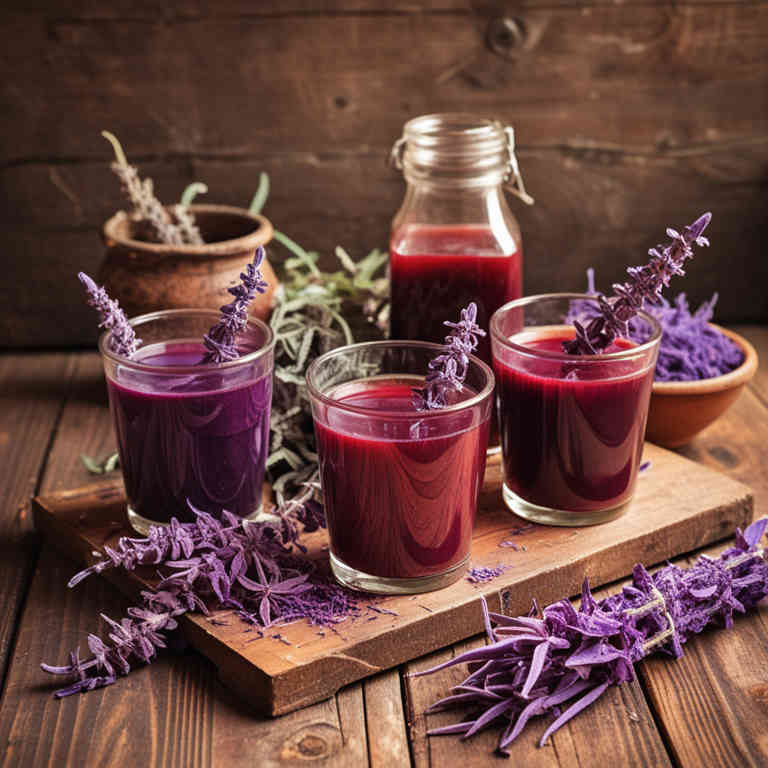Salvia miltiorrhiza juice for medicinal use

Salvia miltiorrhiza juice is a traditional herbal preparation derived from the root of the Salvia miltiorrhiza plant, commonly known as Chinese red sage.
It is widely used in traditional Chinese medicine for its purported ability to improve circulation, reduce inflammation, and support cardiovascular health. The juice is typically prepared by extracting the active compounds from the dried root through water or alcohol. In herbalism, it is often used to treat conditions such as blood stasis, menstrual disorders, and liver diseases.
Its antioxidant and anti-inflammatory properties make it a valued remedy in both traditional and modern herbal practices.
Uses
Salvia miltiorrhiza juice has been used to treat a variety of health conditions for centuries, particularly in traditional Chinese medicine.
Historically, it was valued for its ability to promote blood circulation and reduce inflammation, often used to address issues like menstrual disorders and cardiovascular health. In modern times, scientific research has identified compounds such as salvianolic acid and tanshinone, which contribute to its antioxidant and anti-inflammatory properties. Today, it is commonly used as a dietary supplement to support heart health and improve circulation.
Its long-standing traditional use, combined with modern pharmacological evidence, continues to make it a popular herbal remedy worldwide.
Benefits
Salvia miltiorrhiza juice has health benefits such as improving circulation, reducing inflammation, and supporting heart health.
It contains active compounds like tanshinone and salvianolic acid, which are known for their antioxidant and anti-inflammatory properties. This herbal preparation may help in managing conditions like cardiovascular disease and diabetes by promoting better blood flow and reducing oxidative stress. It is also used in traditional medicine to enhance liver function and support overall well-being.
Regular consumption of Salvia miltiorrhiza juice may contribute to long-term health maintenance and disease prevention.
Constituents
Salvia miltiorrhiza juice active constituents include tanshinones, salvianolic acids, and flavonoids.
These compounds are known for their antioxidant, anti-inflammatory, and neuroprotective properties. Tanshinones, in particular, have been studied for their potential to improve blood circulation and support cardiovascular health. Salvianolic acids contribute to the juice's ability to reduce oxidative stress and promote cellular repair.
Overall, these active components make Salvia miltiorrhiza juice a valuable herbal preparation for various health benefits.
Preparation
To make Salvia miltiorrhiza juice, first gather fresh or dried Salvia miltiorrhiza leaves and roots.
Wash the herb thoroughly and chop it into small pieces to facilitate extraction. Place the chopped herb in a blender or a juicer and add a small amount of water or a mild liquid such as lemon juice to help with the extraction process. Blend or juice until a smooth liquid is obtained, then strain the mixture through a fine mesh strainer or cheesecloth to remove any solids.
Finally, store the juice in a sealed container in the refrigerator for up to a week, or use it immediately as desired.
Side Effects
Salvia miltiorrhiza juice may lead to gastrointestinal discomfort, such as nausea, vomiting, and diarrhea, especially when taken in high doses.
It can also cause allergic reactions in some individuals, including skin rashes and itching. Long-term use may interfere with blood clotting, increasing the risk of bleeding. There is evidence suggesting that it may affect liver function, though more research is needed to confirm these effects.
As with any herbal preparation, it is important to consult a healthcare professional before use, particularly for those with pre-existing medical conditions or who are taking other medications.